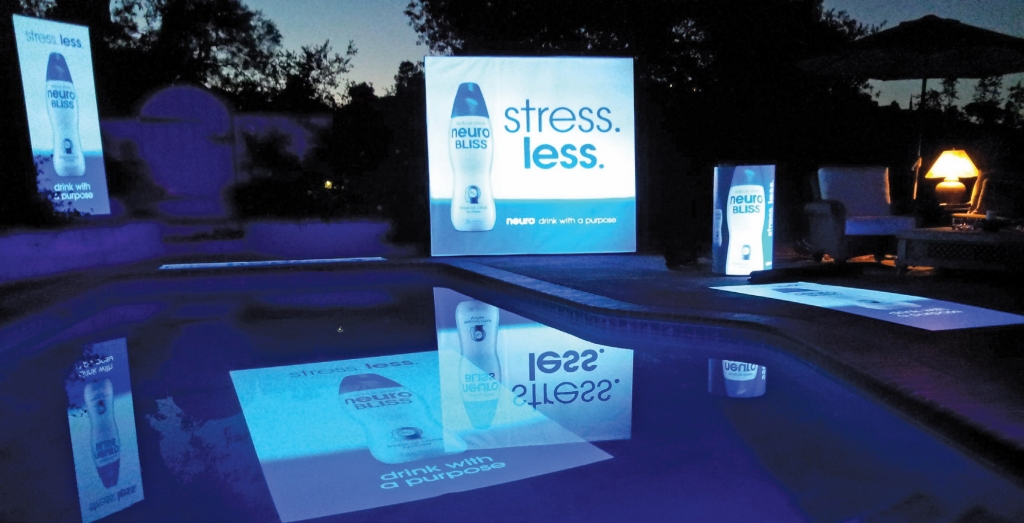Everyone who follows consumer-product trends – or, for that matter, anyone who looks closely at the shelves at grocery or convenience stores – knows energy drinks have become as pervasive as cupcake stores and food trucks. Literally dozens of brands fill beverage-aisle shelves, with numerous health and mental-acuity claims. According to a February report published by www.reportlinker.com, energy drink, shots and mixes tallied $12.2 billion in U.S. sales in 2012. The report also projects the market will grow to $21.5 billion by 2017.
Currently, a handful of brands dominates the energy-drink market (energy drinks accounted for approximately $8 billion of 2012 sales in the energy-supplement market). According to a marketshare report published on www.energyfiend.com, Red Bull commanded 43% of sales, closely followed by Monster, at 39% marketshare. Rockstar ranked third with 10%.
When more than 90% of a product’s marketshare is occupied by three companies, upstarts entering the fray face an uphill battle. Neuro Drinks, an energy-drink company founded by Diana Jenkins in 2007, seeks to compete in that market by offering drinks tailored to specific functions – mental alertness, stamina, weight loss, etc. Rather than simply mixing caffeine with flavorings and additives (and über-slick marketing), Neuro’s formulations include vitamin and mineral combinations designed to help the user meet a specific nutritional or physical need.
How does an up-and-coming company counter its market’s titans? Lacking the energy-drink market leaders’ resources for seemingly endless commercials and corporate sponsorships, marketing teams for smaller entities must sagely understand the value of signage for its promotional arsenal.
GP Color, a North Hollywood, CA-based digital-service provider, may have developed an effective weapon to help David battle Goliath. Founded in 1968 as a photo lab, GP Color transformed into a large- and grand-format print provider when the company’s ownership changed in 2001.
Four years ago, a car manufacturer ordered a fluorescent-illumination billboard to promote its new orange color. The idea for Electric Paint, the company’s luminescent printing process, was born.
Victor Sevilla, GP Color’s marketing director, said it entailed a learning curve: “The first prints we attempted were oversaturated with color and crude, but they showed promise. Although we didn’t produce the project, because more research was required, design teams from major theme-park operators heard about the process we were developing and were intrigued.”
GP Color states that, taken from a single, digital file, the Electric Paint process implements a proprietary printing method that appears like a typical, inkjet print by day, but illuminates the same image in darkness under a fluorescent-UV blacklight. The inks are activated with blacklight set at a 365-400nm frequency (long-wavelength UV), and the material is printed on the company’s UV-typepress equipment.
Sevilla said its current Electric Paint production capacity entails two, 6 x 10-ft. HP flatbed printers, a 16-ft.-wide, UV-cure-ink HP printer and a 7-ft.-wide, roll-to-roll printer. He also noted the process could be used with dye sublimation, lithographic printing or screenprinting.
GP Color has used its process to fabricate signage and environmental graphics installed at major theme parks worldwide, as well as for immersive-environment graphics, such as at the Chicago Museum of Science and Industry, and for backdrops for NBC’s America’s Got Talent and ESPN broadcasts.
A beautiful friendship
GP Color’s owner, Wes Adams, first encountered the Neuro brand when he and Jenkins met at Elton John’s Academy Awards fundraiser in 2007. Since then, GP Color has executed Neuro’s printed graphics. Approximately two years ago, Neuro executives wanted to create a unique, inkjet-printed graphic to wrap a bar surface. Adams introduced Neuro executives to the Electric Paint process, and they eagerly ordered the job.
Because of GP Color’s solid relationship with the customer, Neuro agreed to have its brand depicted in the photos featured with this article. Photographer John Martorano photographed the signs’ installation at Adams’ home in Sherman Oaks, CA. Altman Lighting, which provides illumination for entertainment and special-event purposes, provided the blacklight backdrop that unlocks the Electric Paint’s luminescence.
All vinyl graphics fabricated for the project incorporate Ultraflex (Rockaway, NJ) materials. They include:
• AquaFlex, a 50-mil, 63-in.-wide material designed for underwater use, which can be imprinted with UV-cure, solvent or latex inks. AquaFlex may be repositioned by hand or with a pool brush. The company recommends UV-resistant, liquid lamination to keep colors vibrant underwater;
• For the concrete and tile areas around the pool, GP Color printed on and installed FloorFlex, a 42-oz., non-slip media with a latex-padded backing that sells in 78- and 126-in. widths and can be imprinted with latex and UV-cure inks.
• To print the smaller, stand-supported banners, the shop used SuperSmooth PET Greyback, a smooth-surface, high-resolution-printable, non-curling banner material that with a gray backside that prevents light transparency, and is designed for roll-up or X-display graphics;
• To decorate the cooler, GP Color incorporated FabriTac, an opaque, removable-adhesive fabric that contains a water-resistant coating and may be reportedly mounted to any surface and imprinted with solvent, eco-solvent, latex or UV-cure inks;
• And, the large banners comprise UltraPoplin Soft Image U240, a matte-finish, 7.5-oz., soft-poplin substrate that’s made from knitted polyester and, according to Ultraflex, contains reclaimed material and is fully recyclable. It also contains coatings that make it easily printable and wrinkle- and crease-resistant, the company states.



 Tip Sheet1 week ago
Tip Sheet1 week ago
 Photo Gallery2 days ago
Photo Gallery2 days ago
 Ask Signs of the Times4 days ago
Ask Signs of the Times4 days ago
 Real Deal1 week ago
Real Deal1 week ago
 Benchmarks6 days ago
Benchmarks6 days ago
 Editor's Note2 weeks ago
Editor's Note2 weeks ago
 Women in Signs1 week ago
Women in Signs1 week ago
 Photo Gallery1 week ago
Photo Gallery1 week ago







